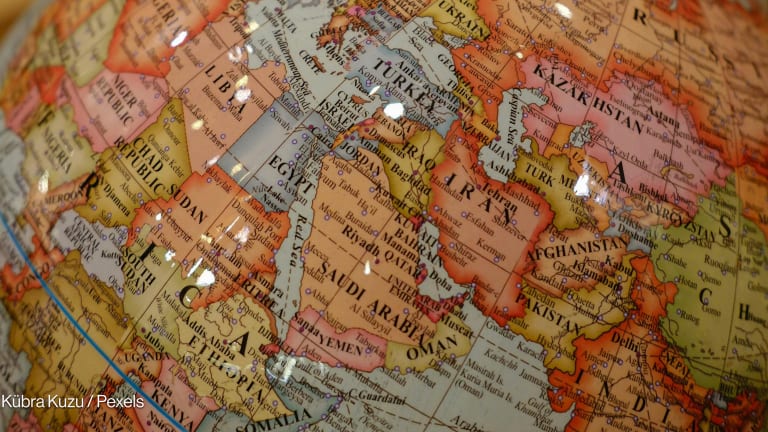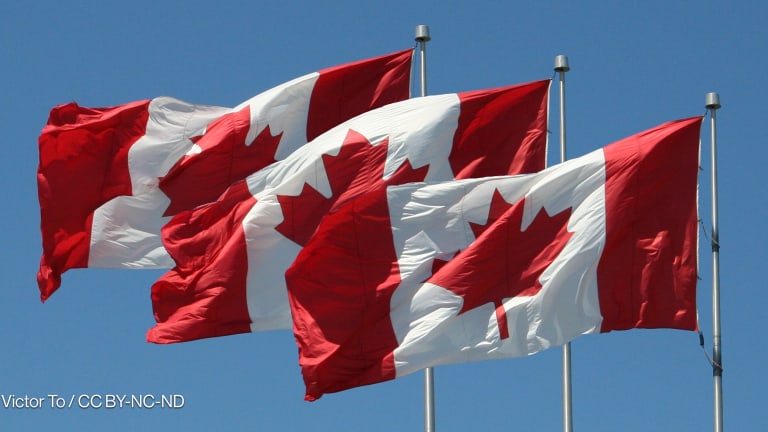Top 10 USAID awardees in 2017
Devex takes a look at the biggest winners of USAID contract and assistance awards in 2017.
JOHANNESBURG — As the United States Agency for International Development’s fiscal year 2018 is heading toward its close, Devex analyzes the 2017 awards data identifying the key trends and biggest contractors. Keep reading for a list of the top 10 contractors of 2017, and stay tuned for an analysis of the 2018 awards data later this quarter. More on the data According to data extracted from USAspending, USAID awarded $16.69 billion in funding in its fiscal year 2017. About 30 percent of that funding ($5.1 billion) and 63 percent of awards (11,021) went to contract awards — funding awarded to a prime recipient for goods, works, and services. The remainder went to assistance awards — funding given as aid to recipient organizations, programs, individuals, or governments. Assistance awards are frequently grants and cooperative agreements but can take other forms such as loans, insurance, and direct payments. The analysis in this article covers both contract and assistance awards. It is important to note that these figures are based on Federal Action Obligations, the U.S. federal government’s obligations (or sometimes de-obligations) for award transactions. It is the most conservative quantification of an award’s value, as it doesn’t include the values of any additional options attached to it. Each award is tagged with two key geographic data points: The location of performance and the location of the recipient. The former tells us where the activity funded by USAID is happening, and the latter tells us where the contractor who awarded the funding comes from. The majority of 2017 awards supported activities performed outside the U.S. by U.S.-domiciled contractors. Eighty-four percent of USAID funding ($14.1 billion) was won by U.S.-based organizations, including 94 percent of contract funding ($4.8 billion). This speaks to the strong ecosystem of U.S.-based development contractors competing for agency funding. Most assistance awards supported activities outside the U.S., as might be expected, while contract awards were more evenly divided between U.S.-based performance and overseas performance. To get a clearer idea of the geographic distribution of 2017 USAID awards, we can remove some data from our sample: Awards to World Bank Group organizations, the International Monetary Foundation, and United Nations agencies and partners. Collectively, awards to these supranational organizations totaled $6.2 billion, or 37 percent of 2017 awards, but they don’t tell us much about the competitive market for USAID contracts. We’ll look at U.N.-destined funds shortly. Having removed these awards, we can then see the top countries of performance, as well as the top countries of origin for USAID contractors. The U.S., unsurprisingly, is at the top of both lists. More surprisingly, firms from Kenya and South Africa appear to have won more contracts than firms from traditional donor countries, as well as a substantial proportion of the awards performed in their own countries. In South Africa — where most of USAID’s contractors are health sector organizations, such as Right to Care, Broadreach Healthcare, and the Wits Health Consortium — South African firms won 57 percent of 2017 USAID awards, a testament to the strong local market for development implementers. The same is somewhat true for Kenya, where the state-owned Kenya Medical Supplies Authority won 38 percent of funding for local activity. Kenya-based contractors won a total of 47 percent of USAID funding for Kenya-based activities in 2017. Member organizations of the World Bank and U.N. — including related organizations such as IMF and the International Organization for Migration — were also important contractors to USAID in 2017. The table below shows the breakdown of awards and funding for these entities. Top 10 2017 contractors But beyond these organizations, who were USAID’s top contractors for 2017? This list shows the top 10, based on the total value of contract and assistance awards won by each contractor. 1. Chemonics International Founded: 1975 Headquarters: Washington, D.C., U.S. Total awarded funding: $1,672.9 million Total number of awards: 261 2. FHI 360 Founded: 1971 Headquarters: Durham, North Carolina, U.S. Total awarded funding: $455.4 million Total number of awards: 196 3. DAI Founded: 1970 Headquarters: Bethesda, Maryland, U.S. Total awarded funding: $398 million Total number of awards: 209 4. Catholic Relief Services Founded: 1943 Headquarters: Baltimore, Maryland, U.S. Total awarded funding: $333.2 million Total number of awards: 175 5. Abt Associates Founded: 1965 Headquarters: Cambridge, Massachusetts, U.S. Total awarded funding: $293.1 million Total number of awards: 60 6. Jhpiego Corporation Founded: 1973 Headquarters: Baltimore, Maryland, U.S. Total awarded funding: $225.1 million Total number of awards: 56 7. RTI International Founded: 1958 Headquarters: Research Triangle Park, North Carolina, U.S. Total awarded funding: $216.7 million Total number of awards: 95 8. Tetra Tech Founded: 1966 Headquarters: Pasadena, California, U.S. Total awarded funding: $201.5 million Total number of awards: 174 9. John Snow Founded: 1978 Headquarters: Boston, Massachusetts, U.S. Total awarded funding: $198.1 million Total number of awards: 53 10. Save the Children USA Founded: 1919 Headquarters: Fairfield, Connecticut, U.S. Total awarded funding: $176.5 million Total number of awards: 142 Looking forward Although we are now approaching the end of USAID’s 2018 fiscal year, it is too early for a full analysis — September has previously been a big month for USAID, accounting for 23 percent ($3.89 billion) of awards in 2017. To date, about $12.5 billion has been awarded by USAID in the fiscal year 2018, far less than the total of $16.89 billion of fiscal year 2017. However, at this point last year, only $12.8 billion had been awarded. Devex will release a full analysis of the 2018 awards data later this quarter, when we’ll see whether a second September “boom” materializes. In the meantime, read more about the future of U.S. aid on Devex’s news page, including the recent re-opening of the agency’s Development Ventures Program.
JOHANNESBURG — As the United States Agency for International Development’s fiscal year 2018 is heading toward its close, Devex analyzes the 2017 awards data identifying the key trends and biggest contractors. Keep reading for a list of the top 10 contractors of 2017, and stay tuned for an analysis of the 2018 awards data later this quarter.
According to data extracted from USAspending, USAID awarded $16.69 billion in funding in its fiscal year 2017. About 30 percent of that funding ($5.1 billion) and 63 percent of awards (11,021) went to contract awards — funding awarded to a prime recipient for goods, works, and services. The remainder went to assistance awards — funding given as aid to recipient organizations, programs, individuals, or governments. Assistance awards are frequently grants and cooperative agreements but can take other forms such as loans, insurance, and direct payments.
The analysis in this article covers both contract and assistance awards. It is important to note that these figures are based on Federal Action Obligations, the U.S. federal government’s obligations (or sometimes de-obligations) for award transactions. It is the most conservative quantification of an award’s value, as it doesn’t include the values of any additional options attached to it.
This story is forDevex Promembers
Unlock this story now with a 15-day free trial of Devex Pro.
With a Devex Pro subscription you'll get access to deeper analysis and exclusive insights from our reporters and analysts.
Start my free trialRequest a group subscription Printing articles to share with others is a breach of our terms and conditions and copyright policy. Please use the sharing options on the left side of the article. Devex Pro members may share up to 10 articles per month using the Pro share tool ( ).
Matthew Wolf works with the Devex Analytics team from Johannesburg in South Africa, helping improve our coverage of and insight into development work and funding around the world. He draws on work experience with Thomson Reuters in Africa, MENA and Latin America, where he helped uncover, pursue and win opportunities with local governments and donor agencies. He is interested in data-driven solutions to development challenges, results-based financing, and ICT4D.








